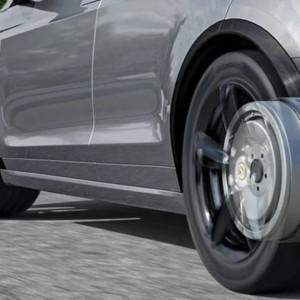In-Wheel Motors Boost Range, Efficiency in EVs


While the pace and market share gains among hybrid electric vehicles (HEVs), plug-in hybrid EVs (PHEVs), and battery EVs (BEVs) may occasionally fluctuate, the overall trend of growth for electrified vehicles and decline for traditional ICE vehicles appears to be firmly established. Overall, the combined share of HEVs, PHEVs, and BEVs in the U.S. market reached a record 21.2% in Q3 2024, driven primarily by BEV sales. Meanwhile, new competitors, especially those from China, are entering the EV market.
They're attracting attention by offering innovative and technologically sophisticated vehicles that are often more affordable than offerings from existing automakers. According to the research firm McKinsey, although EV uptake has increased worldwide, it's always varied by region. In 2024, about 50% of vehicles sold in China were EVs.
Of these, 28% were BEVs, 15% PHEVs, and 6% extended-range electric vehicles[1] (EREVs). EREVs utilize a battery and an onboard combustion engine to extend driving range beyond what's achievable with a purely battery-powered vehicle. The combustion engine acts as a generator, replenishing the battery when it's depleted, allowing for longer trips without relying solely on charging stations. China is the only market where EREVs are now available at scale.
The adoption of electric vehicles in North America is creating both challenges and opportunities for automotive suppliers. Automakers are increasingly opting for flexible and more affordable solutions for consumers. Soon to join the mix are in-wheel drives that allow for better weight distribution compared to a single motor.
They eliminate the need for many of the drive components in traditional vehicles like transmissions, differentials, and axles, which reduces wear and mechanical losses. Most EV motors are radial-flux (RF) architectures[2] with the rotor and stator sitting one within the other. Here, the magnetic flux between the two runs perpendicular to the axis of rotation, or put another way, "radially."
A Dual-Rotor, Radial-Flux Motor
Munich-based DeepDrive[3], an electric motor startup with support from BMW[4] and Volkswagen Group[5], developed and patented what's called a dual-rotor, RF motor.
In a conventional electric motor, the stator moves either an internal or external rotor. With DeepDrive's dual-rotor concept, the stator drives both rotors simultaneously. The design allows for an in-wheel drive system, where each wheel hub has its own electric motor (Fig.
1).
References
- ^ extended-range electric vehicles (www.electronicdesign.com)
- ^ radial-flux (RF) architectures (www.electronicdesign.com)
- ^ DeepDrive (www.deepdrive.tech)
- ^ BMW (www.electronicdesign.com)
- ^ Volkswagen Group (www.electronicdesign.com)